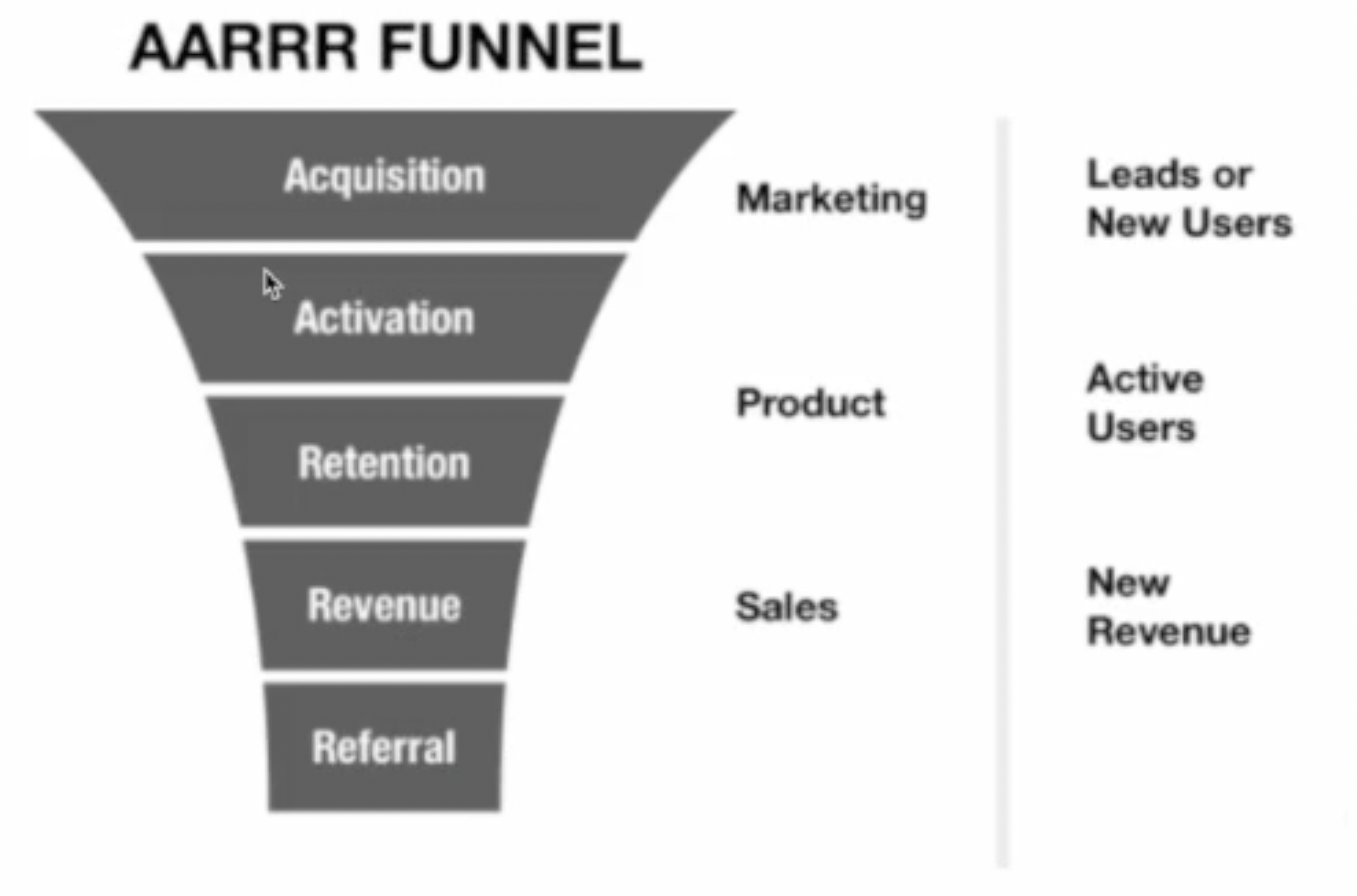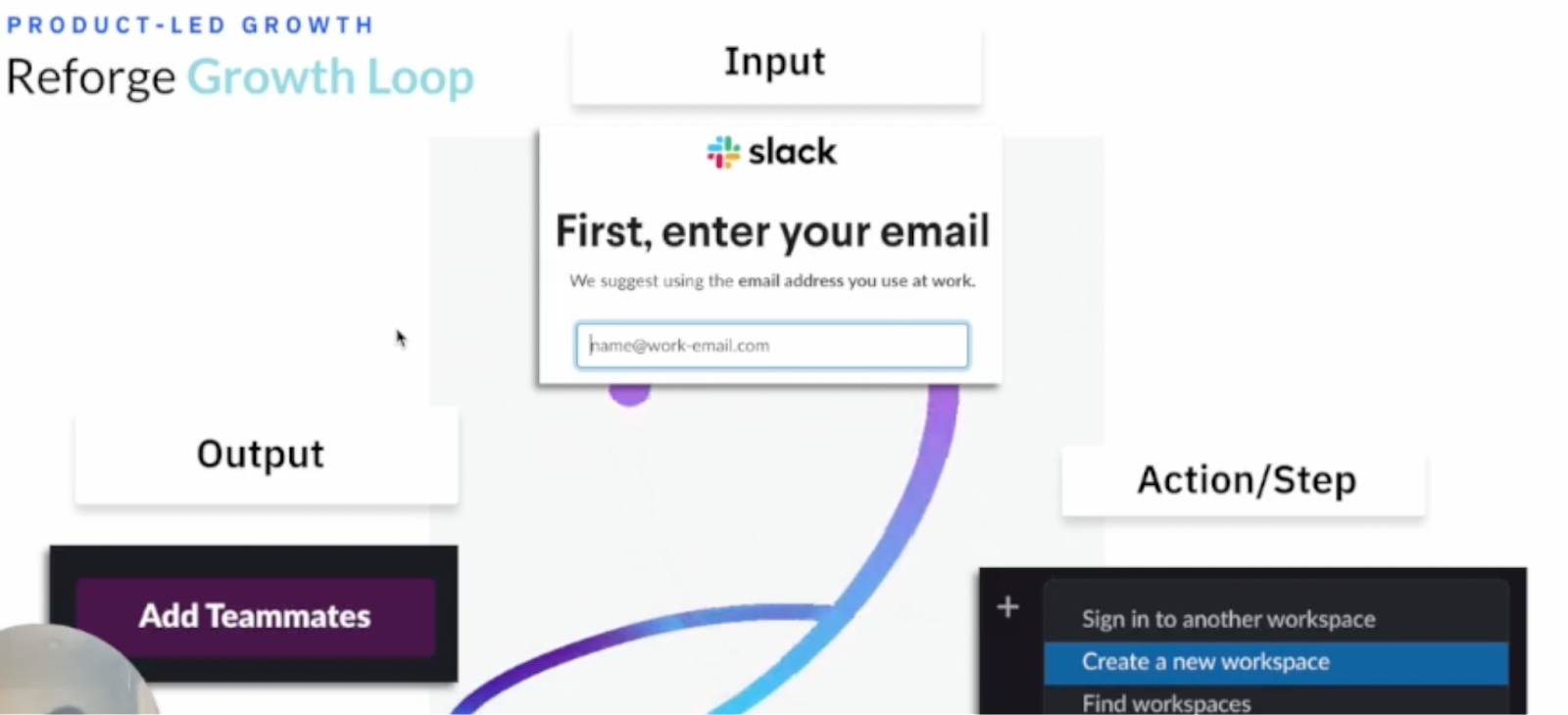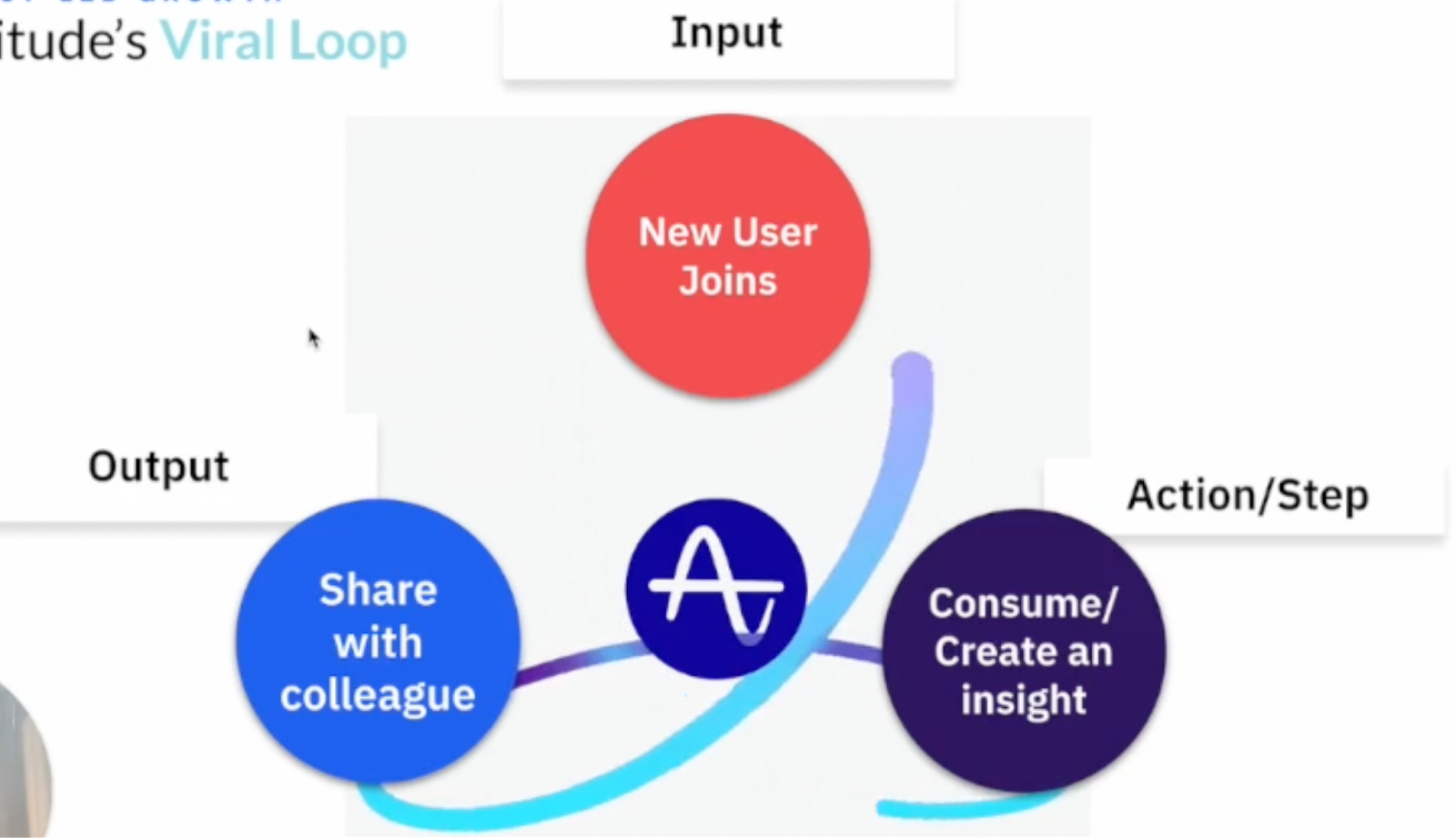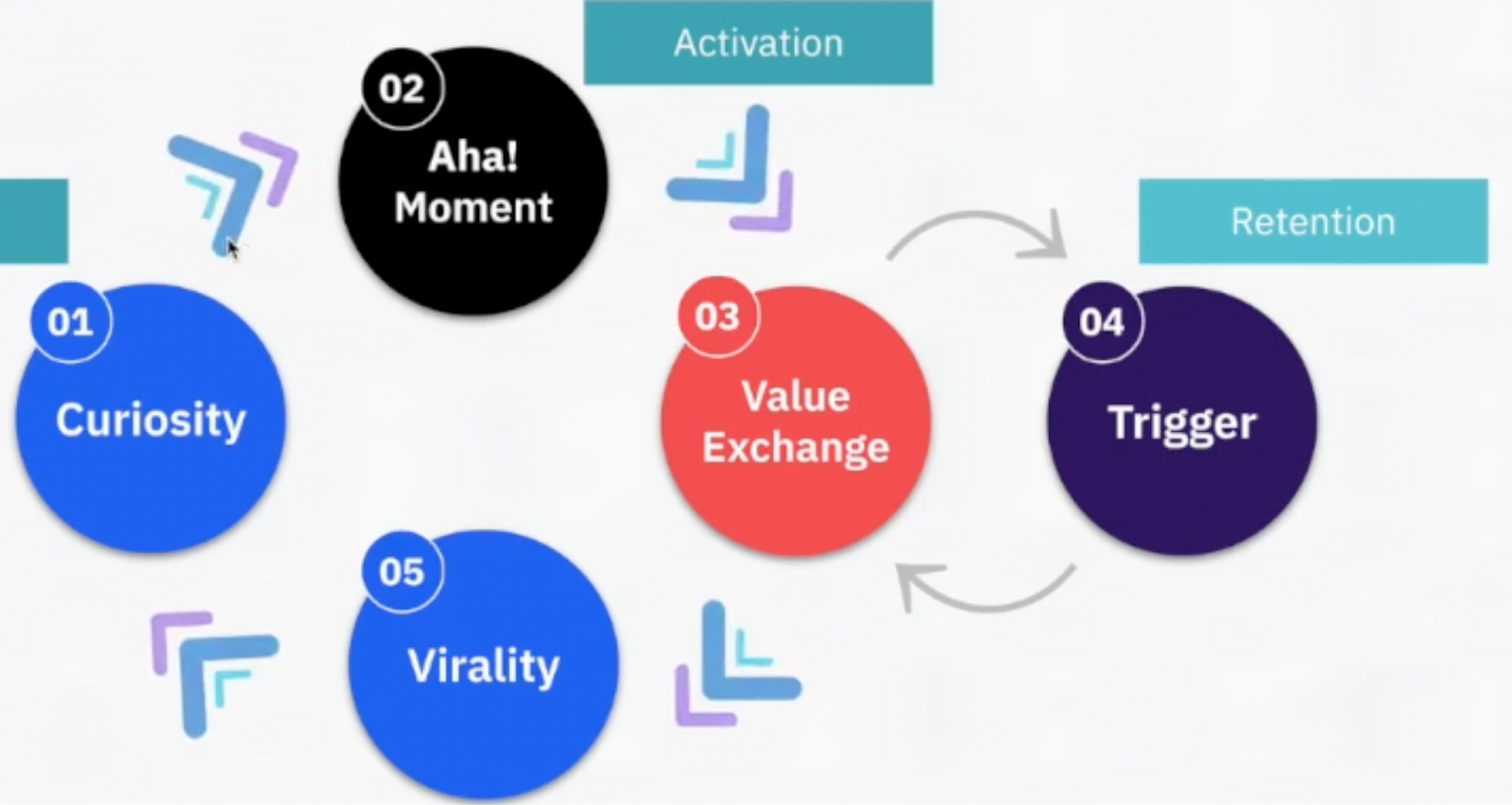Hi, everyone, my name is Krista Cheung, and I'm a Growth Product Manager at Amplitude. In this article, I'll be sharing my insights into driving product growth loops and the metrics you should measure along the way.
- What is product-led growth?
- Identifying business opportunities: loops vs. funnels
- The product growth cycle
- How to build and measure loops
- Summary
What is product-led growth?
Before we being, let's firstly consider what product-led growth (PLG) is, and what it isn't.
Product-led growth does not mean being product manager-led. Great products emerge from empowered, fully cross-functional teams, and there's really no one-size-fits-all perfect leadership model.
Product-led growth also doesn’t imply some kind of hierarchy between product and x. So it doesn't mean that product is the boss of design or support. From everything down to your internal documents, sales collateral has some kind of impact on how customers derive value from your product.
And finally, product-led growth is not about products, marketing, and selling themselves. Some of the world's best products require high-touch, consultative approaches, especially for certain segments of your customers.
So now that we've covered what product-led growth isn't, let's talk about what it is.
Let's begin with a definition from OpenView partners:
“Product-led growth is an end user-focused growth model that relies on the product itself as the primary driver of customer acquisition, conversion, and expansion.”
What OpenView means by that is that in the past, there's been a lot of focus on marketing efforts as a key acquisition channel, and really identifying what channels bring people into your platform.
What OpenView’s definition suggests is that there are a lot more levers we can pull within our products. And by levers, I'm referring to when someone finds value in your product, you can then drive them to increase engagement. And then ultimately, they do the hard work of bringing other users into your product because they're getting so much value.
To do product-led growth right, it starts with the process of understanding what your goal or your north star metric is. From there, you can start to build better experiences that drive user interaction and retention and really fuel the growth of your product.
That's the main focus of what we'll be sharing and covering today, and I'll share a few processes and frameworks that can help you make the right actionable steps for your own product as well.
Identifying business opportunities: loops vs. funnels
Many of you might be familiar with the concept of a funnel or a loop. These are two different frameworks and mental models that a lot of teams use to drive growth for their products.
So let's talk about funnels first.
What is the AARRR funnel?
In a traditional business model, a business acquires new users or leads. This is usually done by marketing efforts, and many teams refer to this as new user acquisition.
The next step after acquisition is to activate these new users, and then it's ultimately about continuing to engage them for long-term retention.
In an e-commerce example, this may look like you making a purchase and then continuing to receive follow-up emails and other enticing offers to help you and persuade you to make repeat purchases.
In the B2B space, this is often done through account management and continuous checkpoints to make sure that you're getting value from the product or service. At the end of your contract, sales will reengage and try to focus on renewing your contract and look for potential new opportunities for additional upsell.
Referrals usually come last in these funnels, and they don't typically have a lot of consideration on how they can really drive new users back to the top of your funnel. Taken together, these stages form the AARRR funnel model.

What are product growth loops?
For an alternative framework, let's talk about growth loops for your product. But what is a growth loop?
Reforge defines a growth loop as:
“A characteristic where the inputs not only lead to certain outcomes, but they also feed back into the input, resulting in more new users returning to your platform.”
So which business model is best for you? While it depends on your situation, growth loops create compounding, consistent, and scalable growth efforts for your product and your business.
Product-led growth loops occur when a product's usage creates value for the user, which in turn generates new users or gets existing users back to your product to leverage it even further.
For product-led companies, it's really critical to think about this in loops. So let's take a look at a hypothetical example.
Imagine a new user signs up for your product, which is something like Slack. The key action and what you want the user to do is to create a Slack workspace.
Then it becomes clear that a user will get a lot more value out of Slack if they invite their other colleagues or teammates. The output we want the user to take is to invite their colleagues to the initial workspace. So imagine the colleague sees the invite via email, they accept the invite, and then they come back into the product, and the process starts all over again.
So once Slack gets this loop working, they don't need to pour tonnes of marketing dollars or hire a lot of sales reps just to make sure Slack is being adopted by more and more users. The users do the work for them, which makes Slack’s growth model sustainable and competitively defensible.

Product growth loops case study: Amplitude
Let's use another example to illustrate how companies potentially think about growth loops. And what better example than Amplitude ourselves?
When a new user joins Amplitude, we want to help get them to an insight about their user or their business as quickly as possible. There are a few new ways that a user can do this. They could either look at an existing chart made by another teammate, or they could create their own chart from scratch.
Ultimately, we want to get them to the point where they want to leverage that certain insight that they just learned. They can use that to make a product change, meaning that new users may potentially share this finding with colleagues. They'll get into a discussion about it, maybe have a brainstorm, and put some kind of plan in place based on these findings.
This can ultimately drive more and more colleagues to actually be exposed to Amplitude, who then get invited and start using Amplitude actively. Thus, the viral growth loop exists for Amplitude.

When we talk about product growth, we need to consider the entire growth model of acquisition, activation, retention, and monetization.
The product growth cycle
Using the following framework, we can represent these different stages in a simple way.
Step one: Curiosity
This represents acquisition where people become aware of your product and decide to try it out.
Step two: ‘Aha’ moment
This represents the moment or set of actions within your product that leads users to first discover the core value of your product.
Step three: Value exchange
Once your customer reaches their ‘aha’ moment, there's usually some kind of value exchange between the business and the user. You can think about this like a trade. For example, Netflix delivers content in exchange for the customer's investment of time and money.
Step four: Trigger
This is a stimulus that brings the user back to the product over time. This can be an external trigger such as an email or a push notification, or it can be an intrinsic behavioral trigger such as a pre-existing use case that requires the user to come back to the product at a certain cadence.
Step five: Virality
This is the phenomenon when users love your product so much they'll be motivated to talk about it with others, or they'll invite their colleagues or friends to try it out. Virality feeds back into creating curiosity for new users and thus creates a new growth loop.

If you want to see how this would work as a hypothetical example, let's talk about how it might work for Spotify.
Assume you see a Taylor Swift ad, which creates curiosity for you to first try out Spotify’s app. When you listen to a song and you create your playlist, you have your first ‘aha’ moment. When you do this often, you then become a paying Spotify subscriber. Spotify can then suggest similar artists or songs that they think will bring you back into the product over time and keep you loyal.
Once you share your playlists with others, this is social proof that others will become curious about trying Spotify out as a result. Then they create their account and become a Spotify user themselves, and the loop repeats.
How to build and measure product growth loops
So the main question you may be asking yourself now is, How do I put something like this into practice? And the other question you may be asking is, How do I know if it's actually working?
Step 1: Map out qualitative growth loops
The first step of this process is to think about your product and the growth loops you may already have in place today.
You may have an invitation flow where existing users can invite others, which may already be creating some kind of viral loop for your product. Or you may have a sharing feature in your product that enables content to be shared with external users, and that could have an acquisition impact for your product.
At this stage, you should start by qualitatively mapping out as many growth loops that occur as possible, even if you're not sure if these loops actually work and how they're performing today.
Step 2: Prioritize and quantify loops
Next, you’ll prioritize and quantify the loops by understanding how well they're working and where to invest resources for the highest impact and ROI.
So let's say you believe that going viral is one of the most important loops for your product, due to the low cost of acquiring new users and the potential impact for your growth. If it works really well, and maybe because you believe your product has a strong network effect, users can get more value from the platform, which also leads to more monetization opportunities.
First, you'll need to audit the step-by-step user flows, what the current invite experience looks like, and what the potential ways are of someone dropping off. And you'll want to make sure you have instrumentation and tracking at every step of the loop.
For example, you’ll want to make sure you're tracking things like how many new users are being acquired in each period, what percentage of them send an invite, how many invites they send per person, and for the percentage of invites that get delivered via email, what percentage of them actually click through and ultimately become a new user.
So to take this a step further, let's look at a hypothetical example and see how this kind of sample social product might work in action.
Your first step is to determine the right timeframe for measuring a cycle of virality for your product. This usually maps to usage frequency of your product, so you should really determine what the natural cadence is at which someone should be using your product. Is it daily, weekly, or monthly?
But it could also be how long it typically takes a new user to send an invite today. You can look at the time to convert for a new user sending the first invite, and determine a time period that captures the majority of the sharing activity. A behavioral analytics tool like Amplitude can usually make this fairly easy to get an insight like this.
Then you'll start by picking a time period, and you'll begin to model out the loop step by step. In the example below, in month one of the product, you've acquired 100 new users. 10% of them send an invite, and on average, each new user invites two additional users. 40% of those being invited actually open the email, click through, and complete the sign-up process to become a new user of your product.
This means that at the end of month one, you have eight new users being added to your platform from existing user invites.

Unfortunately, the loop dies after month two because there aren’t enough new users being generated at the end of the second cycle to allow the loop to continue into another.
In this sense, at this current moment, the loop isn't working that well. And as much as you’d like it to be a loop, it's actually performing more like a funnel. A true loop should see the output feed back into the input and have at least a couple of self-sustaining cycles that help generate sustainable growth.
After modeling out the quantitative and qualitative properties of your loop, it's time to decide if the loop is worth investing in.
Step 3: Identify constraints and improve loop performance
The next step would be to identify key constraints in the product and prioritize how you're going to think about where to invest your team's resources.
So taking an example of what we talked about before, it's clear that the top two constraints of that growth loop are the percentage of users sending invites, and the percentage of invites actually being accepted. So if you can improve those two steps, you believe this actually has the potential to perform like a real loop versus a funnel.
You might host a brainstorming session with your team and come up with some ways that you could drive more users to send invites, and also how you could get a higher acceptance rate out of those invites.
So for example, your product may not have a guided onboarding flow that nudges a new user to invite their friends or teammates after they get some kind of initial value from your product. Your team may also want to run an experiment to see how they can increase this number and see if it’ll drive increased virality and engagement.
And after drilling down to why invites aren’t being accepted, you may find that you have a deliverability issue, or that most of the emails that get delivered go to spam, so you decide that the email itself needs a lot of work, and hence, why not a lot of users are clicking through.
Or maybe you realize that your core persona doesn't work in email at all, and they’d prefer something like Slack or Jira. So then you can focus on those specific parts of the funnel, and address these key issues.
After you've done those steps, it's really just a matter of iterating, learning from your experiments, and measuring how this loop improves over time until you get it to a point where you think the ROI is high enough to invest in.
However, you may decide at some point during the funnel process and prioritization that there aren’t really any meaningful levers for your product to invest further in, and that the ROI and investing in this funnel or loop is just not worth the benefit.
Summary
As a recap, today we talked about what product-led growth is. Product-led growth is a user-focused growth model that acts as its own driver of acquisition, conversion, and expansion.
Both product-led growth loops and funnels have their place in different business models.
For product-led companies, it's really important to think about your inputs, action steps like your aha moment, and your outputs.
And lastly, you really want to make sure you have a plan in place to accurately measure your growth loops as a step-by-step, end-to-end process.
A little about me...
Lastly, I wanted to briefly talk about my journey. I started my career at Shutterfly, where I first had exposure to online marketing and community events.
After that, I joined Macys.com, which was undergoing a digital transformation. And I spent a lot of time focusing on acquisition marketing efforts and SEO.
After that, I transitioned from marketing to product management, where I spent about four years at eBay Classified, which is their global classifieds business. I was part of their emerging markets team, and we focused a lot on new user growth for our South Africa and Mexico businesses.
I'm now part of Amplitude, leading all product activation efforts. My team is really focused on the beginning phases when a user first signs up for Amplitude. This involves helping people get into the product, get to the initial setup, and hopefully reach their initial value moment.




 Follow us on LinkedIn
Follow us on LinkedIn



